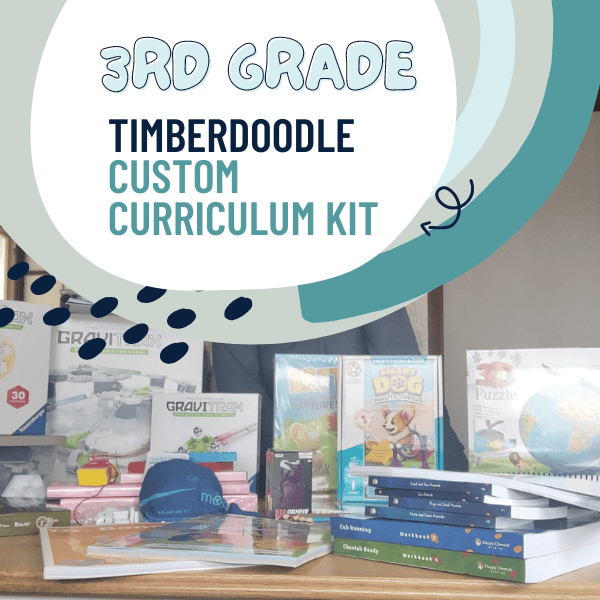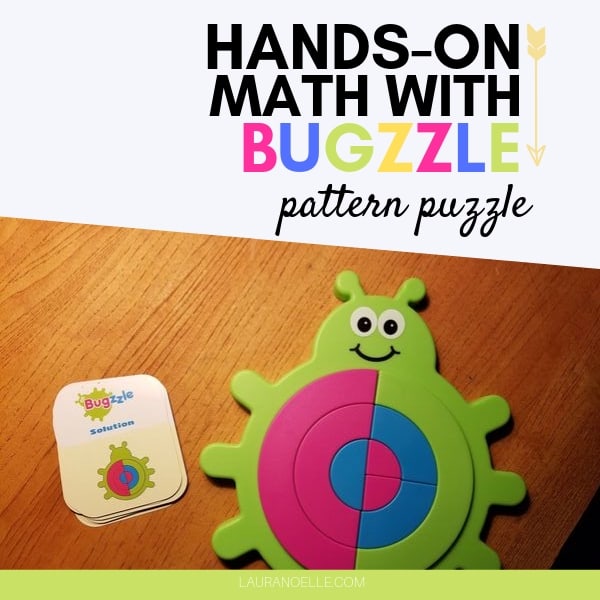You’re Not Failing…You’re Just Not Homeschooling Like a Public School (And That’s the Point)
This post may contain affiliate links, which means I may receive compensation if you make a purchase using one of these links.
You’re finishing homeschool by lunchtime and the guilt is eating you alive. “Are they learning enough?” “Should we be doing more?” Here’s the truth no one’s telling you: that 8-hour school day everyone’s measuring you against? It was never built for learning in the first place. And your shorter homeschool day isn’t a weakness, it’s actually your greatest strength.

Let me guess. You wrap up homeschool around noon and spend the rest of the day second-guessing yourself.
Your mother-in-law makes comments about “real school.” Your neighbor asks how your kids could possibly be learning anything in just a few hours. And late at night, when the house is finally quiet, that voice in your head whispers, “You’re not doing enough.”
I see you, mama. And I need you to know something: that guilt you’re carrying? It’s not coming from your kids. It’s not coming from reality. It’s coming from a cultural myth that was never designed for homeschooling in the first place.
Because here’s what nobody tells you: the average public school student gets about 16 minutes per hour of actual strategic learning. The rest? Transitions. Crowd control. Waiting.
Your 2-hour homeschool day isn’t a sign of failure—it’s proof you’re doing it right.
Today, we’re dismantling the 8-hour myth, looking at what real learning actually is, and giving you permission to stop recreating a broken system in your living room. Because your homeschool deserves more peace, and so do you.
The Research That Will Set You Free
Let’s start with facts, because when you understand what’s really happening in traditional schools, the guilt starts to crumble.
The average public school day runs 6 to 7 hours. Sounds like a lot of learning time, right?
Wrong.
A study referenced by HSLDA found that out of a 400-minute school day, only 250 minutes were even designated for academic instruction. And here’s the kicker, students only demonstrated actual strategic learning behaviors for 67.5 minutes. That’s roughly 16 minutes per hour of genuine learning.
The rest? Transitions between classes. Bathroom logistics. Classroom management. Waiting for 24 other kids to settle down. Morning announcements. The shuffle and noise of moving bodies through a building.
None of that is your child’s fault. It’s just the reality of managing large groups of kids in an institutional setting.
Now here’s where it gets good: HSLDA experts concluded that in as little as 2 hours, homeschoolers can engage in the same amount of focused learning that public school students experience in an entire day.
Why?
Because you’re working one-on-one or in a small group. There’s no crowd control. No waiting for the slowest student to catch up or the fastest to stop being disruptive. When your child doesn’t understand something, you pause and reteach right then. When they grasp a concept quickly, you move forward. No bureaucracy. No wasted time.
The homeschool environment is simply more efficient.
For most families, that looks like this:
- Grades K-3: 1 to 2 hours of focused school time
- Grades 4 and up: 3 to 4 hours, depending on assignments and enrichment
- Even on long days: You’re still nowhere near that mythical 8-hour mark
And you know what? That’s not just fine. It’s actually ideal.
My Own Homeschool Story: What Learning Really Looked Like
I was homeschooled my entire life. I’m a second-generation homeschooler, and now I’m homeschooling my own kids. So I’ve lived this from both sides, as the student and as the teacher.
When I was growing up, our school days looked like this: in the younger grades, we’d spend about 3 hours doing formal lessons. By the older grades, maybe 4 or 5 hours—but that depended entirely on how focused I was.
Full transparency? I was a daydreamer. I’d sit at my desk with my workbook open, staring out the window, lost in my own little world. My mom would walk by and gently redirect me, and I’d dive back into my math problems.
But here’s what I learned early on: I had a list of subjects to finish. And the faster I completed my work, the sooner I got free time. That was powerful motivation. So even though I occasionally dilly-dallied, I also learned to focus, manage my own time, and take ownership of my education.
By early afternoon, we were usually done. We’d have lunch, maybe some outdoor time, and then the rest of the day was ours.
And here’s the thing: that “free time” wasn’t wasted. I was:
- Reading novels
- Writing stories
- Composing songs
- Exploring outside
- Cooking with my mom
- Doing chores
- Learning how to clean, do laundry, and manage a home
All of those things? That’s learning too. Life skills. Real-world education. The kind of stuff that doesn’t show up on standardized tests but absolutely shapes who you become as an adult.
The College Wake-Up Call
When I got to college, I took most of my classes online. And I remember standing with a group of friends one day, talking about how we were managing our workload. When I mentioned I was doing well in online classes, they looked at me like I had superpowers.
“I could never do online classes. I’d never turn in my homework.”
That’s when it clicked.
The independent learning skills I’d built through homeschooling… the ability to manage my own time, lead myself, stay disciplined without someone hovering… those weren’t things they had developed. They’d spent 13 years in a system where teachers handed them assignments, collected homework, and managed every minute of their day.
They didn’t know how to function any other way.
Homeschooling had given me something they didn’t have. And it didn’t take 8 hours a day to build it.
Where the Guilt Really Comes From (And Why It’s Lying to You)
So where does this crushing guilt come from? Why do we feel like failures if we’re not filling every hour with scheduled academics?
It comes from cultural conditioning.
The traditional education system was built around managing large groups of children in factory-like settings. That 8-hour structure wasn’t designed for learning—it was designed for crowd control and efficiency in an industrial context.
And then that mindset trickles down. Educational “experts” who’ve never stepped foot in a homeschool assume their methods are the gold standard. Well-meaning family members, your mom, your mother-in-law, your sister who teaches public school, start asking loaded questions:
- “Are they really learning enough?”
- “What about socialization?”
- “How do you know they’re on grade level?”
They quiz your kids on multiplication facts at family gatherings. They make comments about how “easy” homeschooling must be because you’re “done by noon.”
And suddenly, you’re questioning everything.
But Here’s the Truth They’re Missing
Most of those people have never experienced homeschooling. They don’t understand that:
✅ You’re using real, rigorous curriculum
✅ You’re reading more books than most classrooms ever will
✅ You’re having deeper conversations because you have time and space for them
✅ Your kids are doing research projects, field trips, music lessons, nature studies
✅ They’re building things, asking questions, diving into topics that fascinate them
They see you at home and assume you’re lazy. They don’t see:
- The morning math lesson
- The read-aloud after lunch
- The science experiment on the kitchen counter
- The history documentary you watched together
- The way your 8-year-old explained photosynthesis to their younger sibling because they actually understood it
They don’t see that you’re not tied to a building or a rigid schedule. You have the freedom to slow down when a concept is hard and speed up when it clicks. You can fill gaps instead of just pushing kids to the next grade whether they’re ready or not.
You can go deep instead of wide, and that makes all the difference.
But the pressure? The expectations? The guilt? That’s all coming from people who don’t understand what you’re doing.
And it’s time to stop letting their fear of the unknown dictate how you feel about your homeschool.
What Real Learning Actually Looks Like (Hint: It’s Not Just Workbooks)
Here’s what I need you to understand: learning doesn’t only happen during “scheduled school blocks.” It happens all day long.
When your kids are:
- Cooking with you → They’re learning math, following directions, building life skills
- Arguing with siblings and working it out → Conflict resolution, communication, empathy
- Building a fort in the living room → Engineering, problem-solving, creativity
- Reading on the couch for an hour → Vocabulary, comprehension, love of learning
Homeschool is not school-at-home. It’s a completely different model. It’s holistic. It’s personalized. It’s efficient. And it’s full of learning that doesn’t fit into a checkbox.
The Gut-Check Questions
When you’re feeling that guilt creep in, ask yourself:
✅ Are we covering the core subjects? (Reading, writing, math, history, science)
✅ Are my kids reading good books?
✅ Are they physically active?
✅ Are they getting time with other kids, like at church, co-op, sports, playdates?
✅ Are they exploring their interests?
If the answer is yes, then mama, you’re doing enough. In fact, you’re doing more than enough.
Practical Ways to Enrich Without Adding Hours (Or Losing Your Mind)
Now, if you’re genuinely concerned that your kids aren’t getting enough depth or enrichment, let me give you some practical ideas that won’t stretch your days or stress.
1. Add One Read-Aloud a Month
Just one. Read a chapter a few times a week. Stretch it out over the month. No pressure.
2. Pick a Weekly Documentary Night
Pop some popcorn, curl up on the couch, watch something educational together. You’re not adding school time, you’re just being intentional with screen time you were probably already using.
Fun fact: watching historical films was how my daughter became interested in history and began to understand the past in a way textbooks never could.
3. Use Audio Resources
I load MP3 history lessons onto my daughter’s Yoto player. She listens while I’m washing dishes or helping my toddler. She’s learning independently, and I’m not stretched thin.
4. Explore Free Online Resources
Art classes. STEM lessons. Geography games. There are so many low-cost options that let your kids learn without you teaching every single thing.
5. Think in Seasons and Semesters
You don’t have to do every subject every day. We do a 12-week art history series one semester, then switch to a money and finances unit the next. It keeps things fresh without overwhelming our schedule.
The key: Enrichment doesn’t mean more hours. It means being intentional with the time you already have.
The Mindset Shift You Need Right Now
Mama, if you’re feeling overwhelmed, behind, or guilty because your homeschool day only lasts 2 to 4 hours, take a deep breath and hear this:
Your kids are learning all day long.
Even when you’re not sitting at the table with workbooks open, they’re still learning. Through life. Through conversation. Through play. Through exploration. Through watching you manage a home, solve problems, and navigate challenges.
That’s the beauty of homeschooling. You don’t have to recreate the traditional system. You get to build something better.
So release the pressure. Let go of the guilt. Stop measuring your homeschool day against a model that was never designed for one-on-one, personalized, life-integrated learning.
If your kids are growing, learning, and thriving? You’re doing it right.
Homeschooling doesn’t need to take 8 hours a day. It never did. That’s a myth rooted in a system that doesn’t look anything like what you’re building at home.
So the next time someone asks you, “Is that really enough?” you can smile and say:
“Yes. It’s more than enough. Because we’re not just doing school—we’re living learning.”
Your homeschool deserves more peace, and so do you. And that peace starts when you stop trying to measure your days by someone else’s yardstick.
👉 Ready to gain clarity in your homeschool and get your personalized quick win today? Grab the free Homeschool Simplicity Staples, six sanity-saving tools to cut the chaos and help you feel in control.
And remember, mama: You don’t have to do it all, just do what sticks.
Sources:
HSLDA Study on Instructional Time: https://hslda.org/post/homeschoolers-may-need-less-instructional-time-than-traditional-school-students






